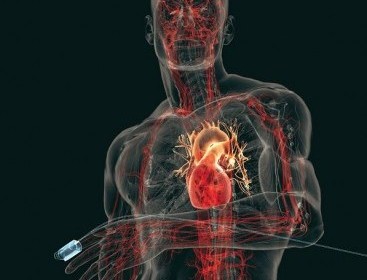Heart Rate Variability (HRV) biofeedback is psycho- physiological measurement (Heart Rate-ECG, Blood Pressure, and Respiration) to diagnose autonomic regulation, stress resistance, cardiovascular health, and vitality in persons. Heart Rate Variability (HRV) means changes in the interval or distance between one beat of the heart and the next. The interbeat interval (IBI) is the time between one R-wave (or heart beat) and the next, in milliseconds. The IBI is highly variable within any given time period. HRV is analyzed in two ways, either over time (Time Domain) or in terms of the frequency of changes in Heart Rate (Frequency Domain).
HRV biofeedback training is a special technique for training individuals to change their variability as well as dominant heart rhythms in cardiovascular activity in order to increase their vitality and health. HRV biofeedback is applied to a variety of medical and psychiatric conditions such as: anger, anxiety disorders, stress disorder, depression, asthma, cardiovascular problems, or chronic fatigue. Biofeedback training suites for individuals who would like to increase the percentage of total HRV (vitality) by proper breathing exercises in order to adjust their “resonant frequency” and, thus, generate autonomic balance of the nervous system between sympathetic and parasympathetic tone.
Each individual has a “resonant frequency” at which heart rate variability is the greatest and the most vital for their organism. This “resonant frequency” is measured by HRV biofeedback instruments and it is a training of the heart rhythm by respiration called Respiratory Sinus Arrhythmia (RSA). This “resonant frequency” is mostly produced by persons in a relaxed mental state, with a positive emotional stage, and especially by diaphragmatic breathing at a rate of about 5-7 breaths per minute. Thus, individuals in HRV biofeedback training are directly taught to increasing their HRV parameters and, consequently, improve their mental health, vitality, autonomic balance.


